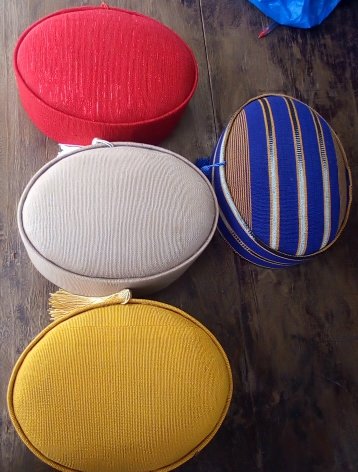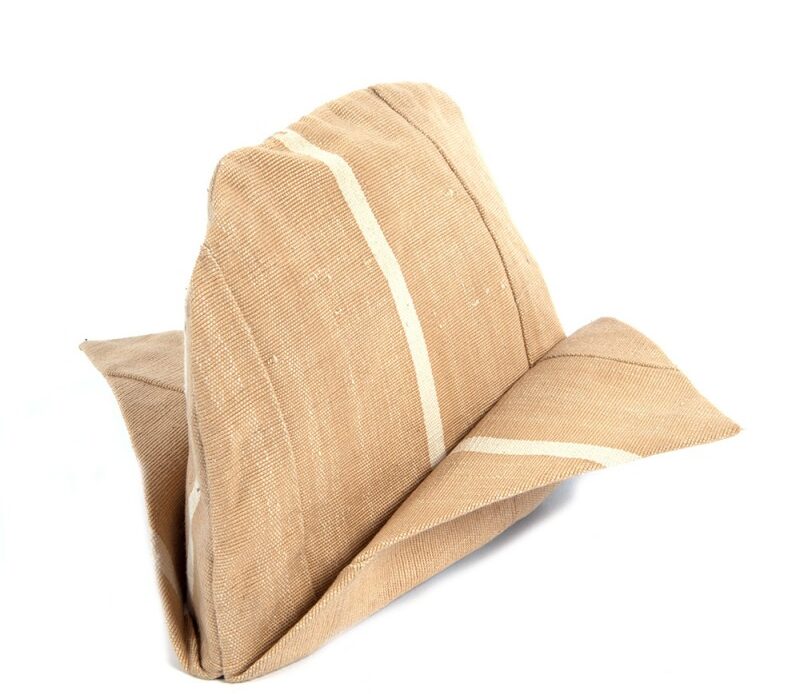Although fashion is constantly evolving, native caps are very much still the same as they were many years ago. The traditional cap, known as “fila” in the Yoruba language, is of immense significance and cultural relevance in the rich tapestry of Yoruba culture. It is not just a fashion accessory but an embodiment of centuries-old tradition, social hierarchy, and community identity. The ‘fila’ is a tangible expression of one’s status, lineage, and personal style, making it a crucial part of Yoruba culture.
Across the vast tapestry of Yoruba society, numerous styles of fila exist, each with its unique characteristics, history, and significance. From the regal elegance of the gobi cap to the urban flair of the Awolowo, these diverse headwear styles offer a glimpse into the rich cultural traditions of the Yoruba people.
The Different Types of Fila
Gobi Fila

The Gobi Fila is an outstanding example of the Yoruba headwear tradition, representing grace, power, and prestige. The Gobi cap is a tall and cylindrical-shaped cap adorned with intricate embroidery. It is generally worn by titled chiefs, elders, and nobles.
Read: Six amazing facts about Filà (cap) you probably don’t know
Luxurious fabrics such as aso-oke (handwoven cloth) or velvet make the cap, typically showcasing intricate designs and motifs that reflect the wearer’s social status and lineage. The Gobi fila is generally reserved for formal occasions and ceremonial events, where its majestic presence commands admiration and respect.
Awolowo Fila

The Gobi fila and the Awolowo cap are two different styles of caps. While the Gobi fila has a grand and traditional look, the Awolowo cap has a more modern and urban feel. The cap is named after Chief Obafemi Awolowo, a well-known Yoruba statesman. It gained popularity in the mid-20th century and is now associated with sophistication and modernity.
The Awolowo fila has a flat and wide brim with a minimalist design. It is a popular choice among young men and urban professionals who want to express their cultural identity in a contemporary way. This cap can be worn with traditional clothing such as agbada or modern suits, making it a versatile accessory for formal and informal occasions.
Abeti Aja

The Abeti Aja fila, also known as the “greyhound’s ears cap,” is a remarkable style of headwear that stands out for its unique shape and decorations. It is named after the ears of racing greyhounds since it features two pointy flaps that stick out from the crown, creating a striking and bold outline. It is usually made from luxurious fabrics like velvet or brocade and adorned with intricate embroidery, beads, or metallic accents, making it a perfect accessory for special events and celebrations.
Read: Hausa Traditional Attire
Kufi Style

The Kufi style is another headwear tradition in Nigeria, especially among the Muslim population. The Kufi is a rounded skullcap typically worn by Muslim men to symbolize purity, modesty, and religious identity. It is also known as “taqiyah” or “topi” in other cultures. While the Kufi is not exclusive to Nigeria, it holds a special place in Nigerian Muslim culture. It is often worn as part of traditional attire for religious and social occasions.
Kufis can be made from various materials, including cotton, wool, silk, and synthetic fabrics. The choice of material may depend on factors such as climate, personal preference, and occasion.
The Kufi is traditional Nigerian headwear for men. It is commonly worn during formal events such as weddings, Eid celebrations, and religious gatherings. The kufi is usually paired with flowing robes (agbada) or tailored suits to add an elegant and sophisticated touch to the overall attire.
